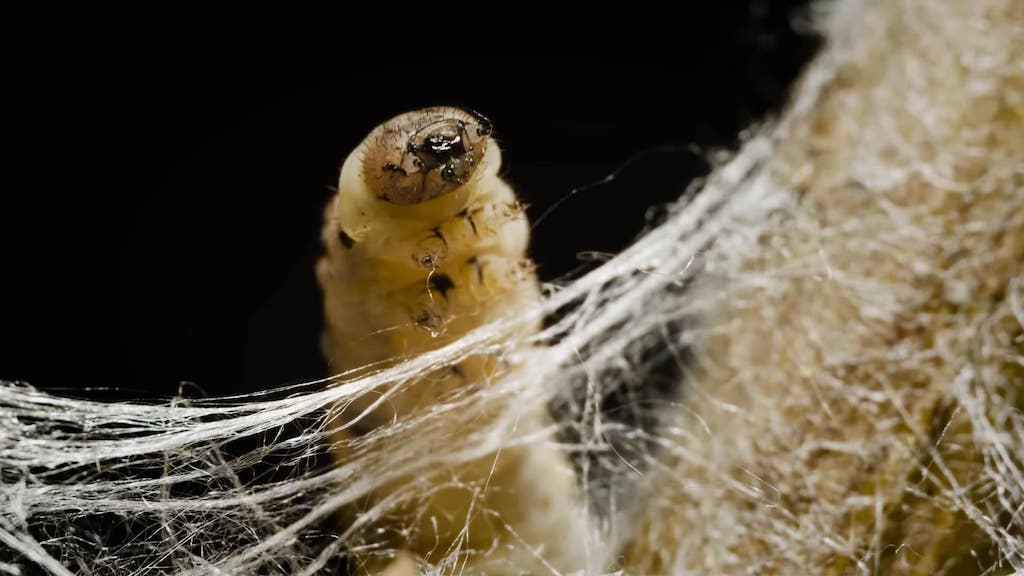How Silkworms in Captivity Unwittingly Plot Their Own Demise by Spinning Silk Cocoons
Lesley McClurg of the KQED series Deep Look explains how silkworms in captivity unwittingly plot their own collective demise by doing what comes most naturally to them. The silkworm's cocoon is constructed of an incredibly long piece of silk fiber. If the silkworm were to grow into a moth, that single cocoon thread would be broken and unusable.
For most silkworms in captivity, this is where their journey ends. To preserve the integrity of the continuous silk thread in each cocoon, silk farmers kill the pupa inside the chrysalis by boiling, steam, or sun. Then the strands are loosened in hot water and unwound by hand using specialized spinners and silk harvesting tools. This raw silk is then gathered onto large spools and refined into commercially valuable threads. It can take up to 2000 silkworms to make one silk dress.

Despite the untimely end for most silkworms, some are allowed to become moths in order to mate and reproduce. These moths have been bred for so many years that they cannot fly and they've lost all coloring.
However a few lucky pupae are allowed to continue developing and become moths, so they can spawn the next generation. After centuries under our watch, these industrious weavers can't fly, and their camouflage is gone, so they wouldn't last long in the wild. They can hardly move.
Despite all this, silk remains popular, and not only in the fashion industry.
Today, the silk industry is valued at more than $10 billion globally, but it is more than just a luxury item. Silk is pound-for-pound stronger than steel, and it is now used in medicine to heal bones and tendons. Our five thousand year love affair with this extraordinary material continues to hold silkworms captive - until we learn to spin silk better than they can.